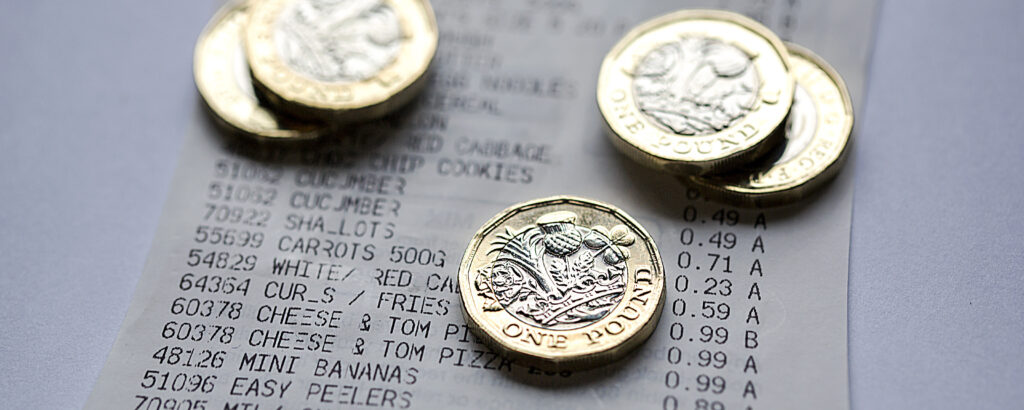
News in Review
| UK inflation unexpectedly rose to 3.6% in June, reducing hopes of imminent interest rate cuts | Retail sales showed strong annual growth of 3.1%, led by food sales and resilient online spending | Unemployment hit 4.7% and vacancies continued to fall, signalling persistent labour market softness and caution |
“This surprise uptick in CPI to 3.6% is a disappointment for households and businesses”
The latest Consumer Prices Index (CPI) data from the Office for National Statistics (ONS) has shown an unexpected rise of 3.6% in the 12 months to June, up from 3.4% in the 12 months to May. This annual CPI rate is the highest recorded since January 2024, with a poll of economists predicting the rate would remain unchanged at 3.4%.
During June, clothing, food, air and rail fares ticked up, while fuel prices tempered. Transport was the main driver of higher inflation, but upward contributions were partially offset by housing and household services. Food prices increased annually by 4.5%, the highest rise since February 2024, due to key ingredients going up in cost.
The new data has dampened expectations for further cuts in Bank Rate. The rate of inflation remains notably higher than the target of 2%, so the Bank of England is expected to proceed with caution.
Chief Economist at the Institute of Directors, Anna Leach said, “This surprise uptick in CPI to 3.6% is a disappointment for households and businesses. Services inflation, in particular, will concern the Bank – it had been expected to remain flat. With borrowing costs still high and economic growth stagnating, the UK is skirting dangerously close to stagflation.”
Looking ahead to the next Bank Rate decision, due in early August, Ms Leach continued, “The MPC will need clear signs that wage growth is easing and second-round inflation effects are fading before it can justify another cut.”
And in the US…
The UK isn’t the only country feeling the effects of inflation. Across the pond, consumer prices rose monthly from 2.4% to 2.7% in June, according to the US Bureau of Labor Statistics. Increased housing and energy costs were the primary reasons for the increase. Trump’s higher tariffs are also likely to have contributed to prices going up, with the index for household appliances and supplies rising by 1%. It therefore seems unlikely that the Federal Reserve will reduce interest rates later this month.
“Retail sales heated up in June”
In June, UK retail sales increased annually by 3.1%, a sharp improvement on the 0.2% decline recorded in June 2024. Food sales led the way with a 4.1% annual increase, while non-food sales went up by 2.1%. The proportion of non-food items bought online held steady at 36.6%, remaining just below the 12-month average of 36.8%.
Chief Executive of the British Retail Consortium, Helen Dickinson, noted, “The outlook is not all bright and sunny: retailers are watching government closely for details of the upcoming business rates reform.” She added, “If government wants to improve high streets and help local communities, they must ensure that no shop pays more under their new rates reforms.”
Unemployment rate ticks higher
Figures from ONS show that, between March-May 2025, the UK unemployment rate was 4.7%, the highest since June 2021. In April to June 2025, job vacancies fell for the 36th consecutive period, decreasing by 56,000 to 727,000. The ONS Vacancy Survey indicates that many employers may not be recruiting new staff, nor do they seem to be replacing workers when they leave. Meanwhile, in March to May, average weekly earnings were up 5% year-on-year, the weakest growth seen since April-June 2022.
Wide regional property price variations
Statistics from Zoopla have found that eight in ten UK homes have gone up in value by at least 5% since the pandemic. Moreover, a million properties have gone up by 50% or more, with most of these homes located in the North West, Yorkshire and the Humber, and Wales. Meanwhile, the south of England has only seen moderate price increases, with half of homes increasing by less than 20%. In the capital, where affordability remains a challenge, 13% of properties have dropped in value by 5% or more, primarily in expensive areas such as Kensington and Chelsea and Westminster.
Richard Donnell at Zoopla commented, “Our latest analysis clearly shows there is no single housing market and that house price trends vary widely across the UK.”
Unused pensions will face Inheritance Tax
On Monday, the Government confirmed it is proceeding with its plans to include unused pension pots within Inheritance Tax (IHT) from April 2027 with the publication of draft legislation. Exemptions include death-in-service benefits from registered pension schemes and certain defined benefit or collective money purchase arrangements.
Here to help
Financial advice is key, so please do not hesitate to get in contact with any questions or concerns you may have.
The value of investments can go down as well as up and you may not get back the full amount you invested. The past is not a guide to future performance and past performance may not necessarily be repeated.
All details are correct at time of writing (23 July 2025)
